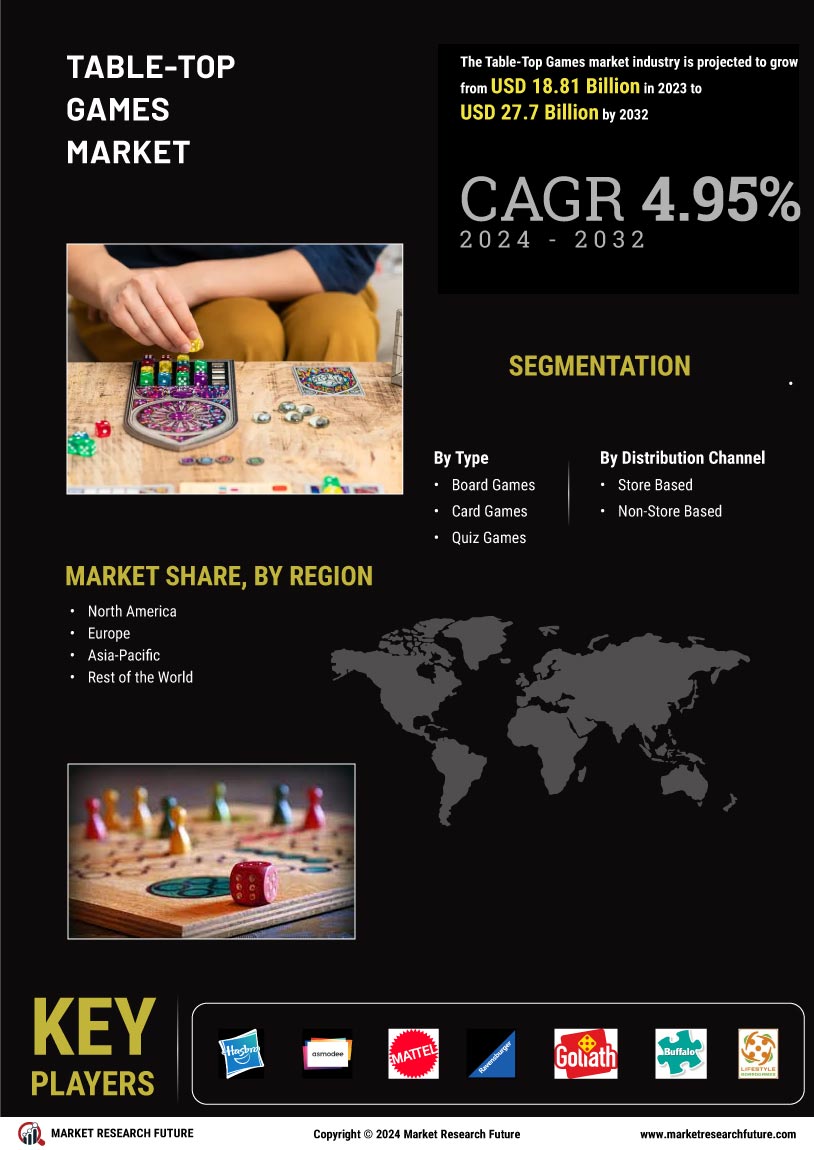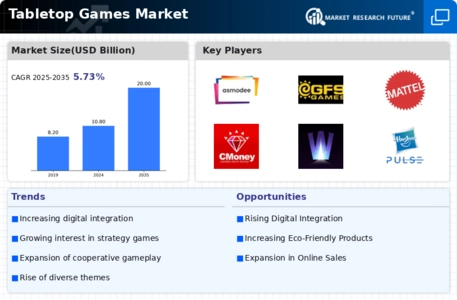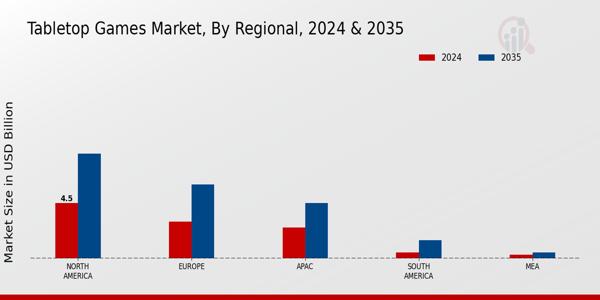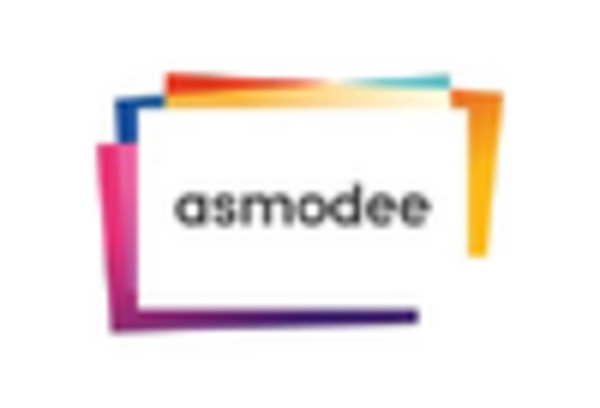Diverse Game Genres and Themes
The Tabletop Games Market is characterized by an impressive array of genres and themes, catering to a wide range of player preferences. This diversity not only attracts a broader audience but also encourages innovation within the industry. Recent statistics suggest that strategy and cooperative games are among the fastest-growing segments, with sales increasing by over 20 percent in the last year alone. The availability of unique themes, such as fantasy, horror, and historical settings, allows players to immerse themselves in different worlds, enhancing the overall gaming experience. As publishers continue to explore new concepts and mechanics, the Tabletop Games Market is likely to see sustained growth, driven by the demand for fresh and engaging content.
Increasing Popularity of Tabletop Games
The Tabletop Games Market experiences a notable surge in popularity, driven by a growing interest in social and interactive entertainment. Recent data indicates that the market is projected to reach a valuation of approximately 12 billion dollars by 2026. This increase is attributed to the rise of gaming cafes and community events that foster engagement among players. As more individuals seek alternatives to digital entertainment, tabletop games provide a tangible and immersive experience that appeals to diverse demographics. The industry benefits from this trend, as it encourages both new and seasoned players to explore various genres, from strategy to role-playing games. Consequently, the expanding audience base contributes to the overall growth and sustainability of the Tabletop Games Market.
Rise of Online Platforms and Communities
The Tabletop Games Market is witnessing a transformation due to the emergence of online platforms and communities that facilitate gameplay and interaction. Websites and applications dedicated to tabletop gaming have gained traction, allowing players to connect, share experiences, and participate in virtual events. This trend is reflected in the increasing number of online sales, which have reportedly risen by 30 percent in the past year. These platforms not only provide access to a wider range of games but also foster a sense of community among players, enhancing the overall appeal of tabletop gaming. As more individuals turn to online resources for gaming, the Tabletop Games Market is poised for continued expansion, driven by the integration of technology and social interaction.
Expansion of Retail and Distribution Channels
The Tabletop Games Market is benefiting from the expansion of retail and distribution channels, which enhances accessibility for consumers. Traditional brick-and-mortar stores, as well as online retailers, are increasingly stocking a wide variety of tabletop games, making it easier for players to discover new titles. Recent data suggests that the number of specialty game stores has increased by 25 percent in the last two years, reflecting a growing interest in tabletop gaming. This expansion not only provides consumers with more options but also supports local businesses and fosters community engagement. As distribution channels continue to evolve, the Tabletop Games Market is likely to experience sustained growth, driven by improved accessibility and consumer awareness.
Growing Interest in Educational and Developmental Games
The Tabletop Games Market is increasingly recognized for its potential in educational and developmental contexts. Educators and parents are turning to tabletop games as tools for teaching critical thinking, teamwork, and problem-solving skills. Recent studies indicate that educational games have seen a rise in popularity, with sales increasing by approximately 15 percent over the last year. This trend highlights the versatility of tabletop games, as they can be adapted for various age groups and learning objectives. As awareness of the benefits of tabletop gaming in educational settings grows, the industry is likely to see a surge in demand for games that promote learning while providing entertainment. This dual purpose enhances the appeal of the Tabletop Games Market, attracting a diverse audience.


















Leave a Comment